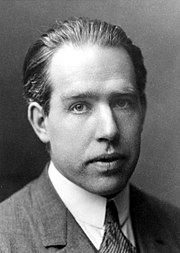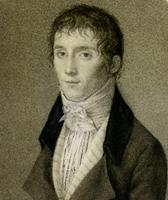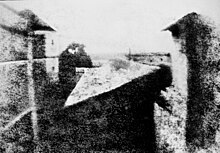
พระมหากรุณาธิคุณอันยิ่งใหญ่ของพระบาทสมเด็จพระจุลจอมเกล้าเจ้าอยู่หัว รัชกาลที่ 5 คือ การประกาศเลิกทาส ทำให้ปวงชนชาวไทยได้เป็นไทมาจวบจนทุกวันนี้
ในรัชสมัยของพระองค์ สยามประเทศได้เกิดการเปลี่ยนแปลงที่สร้างความวัฒนาให้กับชาติเป็นจำนวนมาก ไม่ว่าจะเป็น การไฟฟ้า การไปรษณีย์ โทรเลข โทรศัพท์ ฯลฯ ด้วยพระราชกรณียกิจที่ยังความผาสุกให้เกิดแก่ประชาชน ทวยราษฎร์ทั้งปวงจึงน้อมใจแสดงความจงรักภักดี ด้วยการถวายพระนามว่า "พระปิยมหาราช" หรือพระพุทธเจ้าหลวง และกำหนดให้ทุกวันที่ 23 ตุลาคม เป็น วันปิยมหาราช
ความเป็นมาของ วันปิยมหาราช

เมื่อวันที่ 23 ตุลาคม พ.ศ.2453 ได้เกิดเหตุการณ์ที่สร้างความเศร้าโศกให้กับประเทศไทยครั้งใหญ่หลวง เมื่อพระบาทสมเด็จพระจุลจอมเกล้าเจ้าอยู่หัว รัชกาลที่ 5 ทรงประชวรเสด็จสวรรคต ณ พระที่นั่งอัมพรสถานพระราชวังดุสิต เนื่องด้วยพระบาทสมเด็จพระจุลจอมเกล้าเจ้าอยู่หัวทรงเป็นกษัตริย์ที่เป็นที่เคารพรักของทวยราษฎร์ ทรงมีพระมหากรุณาธิคุณอเนกประการ ทั้งในการปกครองบ้านเมือง และพระราชทานความร่มเย็นเป็นสุขแก่ชนทุกหมู่เหล่า
ต่อมาในรัชสมัยของพระบาทสมเด็จพระมงกุฎเกล้าเจ้าอยู่หัว รัชกาลที่ 6 ทางราชการได้ประกาศให้วันที่ 23 ตุลาคม ซึ่งเป็นวันสวรรคตของพระบาทสมเด็จพระจุลจอมเกล้าเจ้าอยู่หัว เป็นวันที่ระลึกสำคัญของชาติเรียกว่า "วันปิยมหาราช" และกำหนดให้เป็นวันหยุดราชการ
เจ้าหน้าที่กระทรวงมหาดไทยซึ่งต่อมาเป็น "กรุงเทพมหานคร" ร่วมด้วยกระทรวงวัง ซึ่งต่อมาเป็น "สำนักพระราชวัง" ได้จัดตกแต่งพระบรมราชานุสาวรีย์ ตั้งราชวัติฉัตร 5 ชั้น ประดับโคมไฟ ทอดเครื่องราชสักการะที่หน้าพระบรมราชานุสาวรีย์ตั้งแต่นั้นมาจนถึงปัจจุบัน
พระราชพิธีทรงบำเพ็ญพระราชกุศล วันปิยมหาราช ครั้งแรกเกิดขึ้นถัดจากปีที่ได้ถวายพระเพลิงพระบรมศพพระบาทสมเด็จพระจุลจอมเกล้าเจ้าอยู่หัว โดยพระบาทสมเด็จพระมงกุฎเกล้าเจ้าอยู่หัว ทรงบำเพ็ญพระราชกุศลทักษิณานุปทานถวายแล้วเสด็จฯ ไปถวายพวงมาลา ทรงจุดธูปเทียนเครื่องราชสักการะที่พระบรมราชานุสาวรีย์
พระราชประวัติ

พระบาทสมเด็จพระจุลจอมเกล้าเจ้าอยู่หัว มีพระนามเดิมว่า สมเด็จเจ้าฟ้าจุฬาลงกรณ์ พระราชสมภพเมื่อวันที่ 20 กันยายน พ.ศ.2396 เป็นพระราชโอรสองค์ที่ 4 ในพระบาทสมเด็จพระจอมเกล้าเจ้าอยู่หัว และพระนางเจ้าฟ้ารำเพยภมราภิรมย์ (สมเด็จพระเทพศิรินทรา พระบรมราชินี) เมื่อพระชนมายุได้ 9 พรรษา ทรงได้รับสถาปนาขึ้นเป็น "กรมหมื่นพิฆเนศวรสุรลังกาศ" ต่อมาเมื่อพระชนมายุได้ 13 พรรษา ทรงได้รับสถาปนาขึ้นเป็น "กรมขุนพินิตประชานาถ" บรมราชาภิเษกครั้งแรกเมื่อวันที่ 11 พฤศจิกายน พ.ศ.2411 ทรงพระนามว่า "พระบาทสมเด็จพระปรมินทรมหาจุฬาลงกรณ์ พระจุลจอมเกล้าเจ้าอยู่หัว"
เนื่องจากขณะนั้นมีพระชันษาเพียง 16 ปี ยังไม่ทรงบรรลุนิติภาวะ สมเด็จพระยาบรมมหาศรีสุริยวงศ์ (ช่วง บุนนาค) จึงเป็นผู้สำเร็จราชการแผ่นดิน และสถาปนากรมหมื่นบวรวิชัยชาญ พระโอรสองค์ใหญ่ของพระบาทสมเด็จพระปิ่นเกล้าเจ้าอยู่หัว เป็นกรมพระราชวังบวรวิชัยชาญพระมหาอุปราช
ระหว่างที่สมเด็จพระยาบรมมหาศรีสุริยวงศ์ เป็นผู้สำเร็จราชการอยู่นั้น สมเด็จพระจุลจอมเกล้าฯ ก็ทรงใช้เวลาศึกษาเล่าเรียนศิลปวิทยาเป็นอันมาก เช่น โบราณราชประเพณี รัฐประศาสน์ โบราณคดี ภาษาบาลี ภาษาอังกฤษ วิชาปืนไฟ วิชามวยปล้ำ วิชากระบี่กระบอง และวิชาวิศวกรรม
ในตอนนี้ยังได้เสด็จประพาสสิงคโปร์และชวา 2 ครั้ง เสด็จประพาสอินเดีย 1 ครั้ง การเสด็จประพาสนี้มิใช่เพื่อสำราญพระราชหฤทัย แต่เพื่อทอดพระเนตรแบบแผนการปกครองที่ชาวยุโรปนำมาใช้ปกครองเมืองขึ้นของตน เพื่อจะได้นำมาแก้ไขการปกครองของไทยให้เหมาะสมแก่สมัยยิ่งขึ้น ตลอดจนการแต่งตัว การตัดผม การเข้าเฝ้าในพระราชฐานก็ใช้ยืน และนั่งตามโอกาสสมควร ไม่จำเป็นต้องหมอบคลานเหมือนแต่ก่อน
เมื่อพระชนมายุบรรลุพระราชนิติภาวะ ได้ทรงผนวชเป็นเวลา 2 สัปดาห์ แล้วจึงประกอบพระราชพิธีบรมราชาภิเษกเป็นครั้งที่ 2 เมื่อวันที่ 15 พฤศจิกายน พ.ศ. 2416 และนับจากนั้นมาก็ทรงพระราชอำนาจเด็ดขาดในการบริหารราชการแผ่นดิน
ตลอดระยะเวลาที่ทรงครองสิริราชสมบัติ ทรงปกครองทำนุบำรุงพระราชอาณาจักรให้มั่งคั่งสมบูรณ์ ดัวยรัฐสมบัติ พิทักษ์พสกนิกรให้อยู่เย็นเป็นสุข บำบัดภัยอันตรายทั้งภายในภายนอกประเทศ ทรงบำเพ็ญพระราชกรณียกิจต่างๆ อันก่อให้เกิดคุณประโยชน์แก่ประเทศชาติ ให้รอดพ้นจากวิกฤตการณ์ และสามารถธำรงเอกราชไว้ตราบจนทุกวันนี้
พระบาทสมเด็จพระจุลจอมเกล้าเจ้าอยู่หัวสวรรคตเมื่อวันที่ 23 ตุลาคม พ.ศ.2453 รวมพระชนมายุได้ 58 พรรษา ครองราชสมบัติมานานถึง 42 ปี
พระราชกรณียกิจ
พระราชกรณียกิจที่สำคัญในสมัยพระบาทสมเด็จพระจุลจอมเกล้าเจ้าอยู่หัว อาทิเช่น
1.การเลิกทาส

เป็นพระราชกรณียกิจอันสำคัญยิ่ง ที่ทำให้พระองค์ทรงได้รับพระสมัญญาว่า "สมเด็จพระปิยมหาราช"
ด้วยพระองค์ทรงเห็นว่า มีทาสในแผ่นดินเป็นจำนวนมาก และลูกทาสในเรือนเบี้ยจะสืบต่อการเป็นทาสไปจนรุ่นลูกรุ่นหลานอย่างไม่มีที่สิ้นสุด ถ้าไม่มีเงินมาไถ่ตัวเองแล้ว ต้องเป็นทาสไปตลอดชีวิต พระองค์จึงทรงมีพระทัยแน่วแน่ว่า จะต้องเลิกทาสให้สำเร็จ แม้จะเป็นเรื่องยากลำบาก เพราะทาสมีมาตั้งแต่สมัยโบราณ อีกทั้งเจ้านายที่เป็นใหญ่ในสมัยนั้นมักมีข้ารับใช้ เมื่อไม่มีทาส บุคคลเหล่านี้อาจจะไม่พอใจและก่อให้เกิดความวุ่นวายขึ้นเหมือนกับที่เกิดขึ้นในต่างประเทศมาแล้ว
พระบาทสมเด็จพระจุลจอมเกล้าฯ จึงตราพระราชบัญญัติขึ้น เมื่อวันที่ 21 สิงหาคม พ.ศ.2417 ให้มีผลย้อนหลังไปถึงปีที่พระองค์เสด็จขึ้นเสวยราชสมบัติ มีบัญญัติว่า ลูกทาสซึ่งเกิดเมื่อปีมะโรง พ.ศ.2411 ให้มีสิทธิได้ลดค่าตัวทุกปี และพอครบอายุ 21 ปีก็ให้ขาดจากความเป็นทาสทั้งชายและหญิง จากนั้นใน พ.ศ.2448 จึงได้ออกพระราชบัญญัติเลิกทาสที่แท้จริงขึ้น เรียกว่า "พระราชบัญญัติทาส ร.ศ.124" (พ.ศ.2448) เลิกลูกทาสในเรือนเบี้ยอย่างเด็ดขาด เด็กที่เกิดจากทาส ไม่ต้องเป็นทาสอีกต่อไป และการซื้อขายทาสเป็นโทษทางอาญา ส่วนผู้ที่เป็นทาสอยู่แล้ว ให้นายเงินลดค่าตัวให้เดือนละ 4 บาท จนกว่าจะหมด
ด้วยพระปรีชาสามารถของพระองค์ท่าน ในเวลาเพียง 30 ปีเศษ ทาสในเมืองไทยก็หมดไปโดยไม่เกิดการนองเลือดเหมือนกับประเทศอื่นๆ
2.การปฏิรูประบบราชการ
ในสมัยพระบาทสมเด็จพระจุลจอมเกล้าเจ้าอยู่หัว ได้ทรงพระกรุณาโปรดเกล้าฯ ให้ตราระเบียบการปกครองขึ้นใหม่ แยกหน่วยราชการออกเป็นกรมกองต่างๆ มีหน้าที่รับผิดชอบเฉพาะไม่ก้าวก่ายกัน จากเดิมมี 6 กระทรวง คือ กระทรวงมหาดไทย, กระทรวงลาโหม, กระทรวงนครบาล, กระทรวงวัง, กระทรวงการคลัง และกระทรวงเกษตราธิการ ได้เพิ่มอีก 4 กระทรวง รวมเป็น 10 กระทรวง ได้แก่ กระทรวงธรรมการ มีหน้าที่ดูแลเกี่ยวกับกิจการของพระสงฆ์ และการศึกษา, กระทรวงยุติธรรม มีหน้าที่ดูแลเกี่ยวกับคดีความที่ต้องตัดสินต่างๆ , กระทรวงโยธาธิการ มีหน้าที่ดูแลตรวจตราการก่อสร้าง การทำถนน ขุดลอกคูคลอง งานที่เกี่ยวกับการก่อสร้าง และกระทรวงการต่างประเทศ มีหน้าที่ดูแลงานที่เกี่ยวข้องกับการต่างประเทศ
3.การสาธารณูปโภค
การประปา ทรงให้กักเก็บน้ำจากแม่น้ำเชียงรากน้อย จังหวัดปทุมธานี และขุดคลองเพื่อส่งน้ำเข้ามายังสามเสน พร้อมทั้งฝังท่อเอกติดตั้งอุปกรณ์สำหรับการทำน้ำประปาขึ้นในเดือน กรกฎาคม พ.ศ.2452
การคมนาคม วันที่ 9 มีนาคม พ.ศ.2434 พระบาทสมเด็จพระจุลจอมเกล้าเจ้าอยู่หัว ได้เสด็จพระราชดำเนินไปขุดดินก่อพระฤกษ์ เพื่อประเดิมการสร้างทางรถไฟไปนครราชสีมา แต่ทรงเปิดทางรถไฟกรุงเทพฯ-พระนครศรีอยุธยาก่อน จึงนับว่าเส้นทางรถไฟสายนี้เป็นทางรถไฟแห่งแรกของไทย

นอกจากนี้ได้โปรดเกล้าฯ ให้สร้างสะพาน และถนนอีกมากมาย คือ ถนนเยาวราช ถนนราชดำเนินกลาง ถนนราชดำเนินนอก ถนนดินสอ ถนนบูรพา ถนนอุณากรรณ เป็นต้น และโปรดให้ขุดคลองต่างๆ เพื่อใช้เป็นแนวทางคมนาคม และส่งเสริมการเพาะปลูก
การสาธารณสุขเนื่องจากการรักษาแบบยากลางบ้านไม่สามารถช่วยคนได้อย่างทันท่วงที จึงพระราชทานทรัพย์ส่วนพระองค์จำนวน 200 ชั่ง โปรดเกล้าฯ ให้สร้างโรงพยาบาลวังหลัง ต่อมาได้เปลี่ยนชื่อเป็น "โรงพยาบาลศิริราช" เปิดทำการรักษาประชาชนเป็นครั้งแรกเมื่อ 26 เมษายน พ.ศ.2431
การไฟฟ้า พระองค์ทรงมอบหมายให้กรมหมื่นไวยวรนาถ เป็นแม่งานในการก่อสร้างโรงไฟฟ้า เพื่อผลิตกระแสไฟฟ้า และสามารถจ่ายกระแสไฟฟ้าให้กับประชาชนครั้งแรกเมื่อปี พ.ศ.2433
การไปรษณีย์ โปรดให้เริ่มจัดขึ้นในปี พ.ศ.2424 รวมอยู่ในกรมโทรเลข ซึ่งได้จัดขึ้นตั้งแต่ พ.ศ.2412 โดยโทรเลขสายแรกคือ ระหว่างจังหวัดพระนคร (กรุงเทพมหานคร) กับจังหวัดสมุทรปราการ
4.การเสด็จประพาส

การเสด็จประพาสเป็นพระราชกรณียกิจที่สำคัญอันหนึ่งของพระบาทสมเด็จพระจุลจอมเกล้าเจ้าอยู่หัว โดยหลังจากเกิดกรณีพิพาทกับฝรั่งเศสแล้ว ก็ได้เสด็จประพาสยุโรป 2 ครั้ง ในปี พ.ศ.2440 ครั้งหนึ่ง และในปี พ.ศ. 2450 อีกครั้งหนึ่ง ทั้งนี้เพื่อเชื่อมสัมพันธไมตรีกับประเทศต่างๆ ในยุโรป ตลอดจนประเทศฝรั่งเศสด้วย อีกทั้งยังได้ทรงเลือกสรรเอาแบบแผนขนบธรรมเนียมอันดีในดินแดนเหล่านั้นมาปรับปรุงในประเทศให้เจริญขึ้น
ในการเสด็จประพาสครั้งแรกนี้ ได้ทรงมีพระราชหัตถเลขาตลอดระยะทางถึงสมเด็จพระนางเจ้าเสาวภาผ่องศรีพระบรมราชินีนาถ (ซึ่งต่อมาได้รับสถาปนาเป็น สมเด็จพระศรีพัชรินทราบรมราชเทวี) ผู้สำเร็จราชการแผ่นดิน พระราชหัตถเลขานี้ต่อมาได้รวมเป็นหนังสือเล่มชื่อ "พระราชนิพนธ์เรื่องไกลบ้าน" ให้ความรู้อย่างมากมายเกี่ยวแก่สถานที่ต่างๆ ที่เสด็จไป
ส่วนภายในประเทศ ก็ทรงถือว่าการเสด็จประพาสในที่ต่างๆ เป็นการตรวจตราสารทุกข์สุขดิบของราษฎรได้เป็นอย่างดี พระองค์จึงได้ทรงปลอมแปลงพระองค์ไปกับเจ้านายและข้าราชการ โดยเสด็จฯ ทางเรือมาดแจวไปตามแม่น้ำลำคลองต่างๆ เพื่อแวะเยี่ยมเยียนตามบ้านราษฎร ซึ่งเรียกกันว่า "ประพาสต้น" ซึ่งได้เสด็จ 2 ครั้ง คือในปี พ.ศ.2447 และในปี พ.ศ.2449 อีกครั้งหนึ่ง

5.การศึกษา
พระบาทสมเด็จพระจุลจอมเกล้าเจ้าอยู่หัว ทรงเห็นความสำคัญของการศึกษา จึงโปรดให้สร้างโรงเรียนหลวงขึ้นในพระบรมมหาราชวัง คือ "โรงเรียนนายทหารมหาดเล็ก" ก่อนจะเปลี่ยนชื่อเป็น "โรงเรียนพระตำหนักสวนกุหลาบ" ต่อมาโปรดให้ตั้งโรงเรียนหลวงสำหรับราษฎรขึ้นเป็นแห่งแรก คือ "โรงเรียนวัดมหรรณพาราม" และในที่สุดได้โปรดให้จัดตั้งกระทรวงธรรมการขึ้น เมื่อปี พ.ศ.2435 (ปัจจุบันคือกระทรวงศึกษาธิการ) เพื่อดูแลเรื่องการศึกษาและการศาสนา

6.การปกป้องประเทศจากการสงครามและเสียดินแดน
เนื่องจากลัทธิจักรวรรดินิยมได้แผ่อิทธิพลเข้ามาตั้งแต่ปลายรัชกาลพระบาทสมเด็จพระจอมเกล้าเจ้าอยู่หัว พระบาทสมเด็จพระจุลจอมเกล้าเจ้าอยู่หัว ทรงใช้ปรีชาสามารถอย่างสุดพระกำลังที่จะรักษาประเทศชาติให้รอดพ้นจากวิกฤติการณ์ ถึงแม้ว่าจะต้องสูญเสียดินแดนบางส่วนไปก็ตาม โดยดินแดนที่ต้องเสียให้กับต่างชาติ ได้แก่
พ.ศ.2431 เสียดินแดนในแคว้นสิบสองจุไทย
พ.ศ.2436 เสียดินแดนฝั่งซ้ายของแม่น้ำโขง ให้ฝรั่งเศส และฝรั่งเศสยึดเมืองจันทบุรีไว้
พ.ศ.2447 เสียดินแดนฝั่งขวาของแม่น้ำโขงให้ฝรั่งเศส เพื่อแลกกับเมืองจันทบุรี แต่ฝรั่งเศสได้ยึดตราดไว้แทน
พ.ศ.2449 เสียดินแดนที่เมืองพระตะบอง เสียมราฐ และศรีโสภณ ให้ฝรั่งเศส เพื่อแลกกับตราด และเกาะทั้งหลาย แต่การเสียดินแดนครั้งสุดท้ายนี้ไทยก็ได้ประโยชน์อยู่บ้าง คือฝรั่งเศสยอมยกเลิกสิทธิสภาพนอกอาณาเขต ยอมให้ศาลไทยมีสิทธิที่จะชำระคดีใดๆ ที่เกิดขึ้นแก่ชาวฝรั่งเศส ไม่ต้องไปขึ้นศาลกงสุลเหมือนแต่ก่อน
ส่วนทางด้านอังกฤษ ประเทศไทยได้เปิดการเจรจากับรัฐบาลอังกฤษ รวมถึงเรื่องสิทธิสภาพนอกอาณาเขตด้วย ใน พ.ศ.2454 อังกฤษจึงยอมตกลงให้ชาวอังกฤษ หรือคนในบังคับอังกฤษมาขึ้นศาลไทย และยอมให้ไทยกู้เงินจากอังกฤษ เพื่อนำมาใช้สร้างทางรถไฟสายใต้จากกรุงเทพฯ ถึงสิงคโปร์ เพื่อตอบแทนประโยชน์ที่อังกฤษเอื้อเฟื้อ ทางฝ่ายไทยยอมยกรัฐกลันตัน ตรังกานูและไทยบุรี ให้แก่สหรัฐมลายูของอังกฤษ
ลำดับเหตุการณ์สำคัญที่เกิดขึ้น
พ.ศ.2411 เสด็จขึ้นครองราชสมบัติ
พ.ศ.2412 ทรงโปรดเกล้าให้สร้างวัดราชบพิธสถิตมหาสีมารามซึ่งเป็นวัดประจำรัชกาลของพระองค์
พ.ศ.2413 เสด็จประพาสสิงคโปร์และชวา, โปรดฯ ให้ยกเลิกการไว้ผมทรงมหาดไทย
พ.ศ.2415 ทรงปรับปรุงการทหารครั้งใหญ่, โปรดให้ใช้เสื้อราชปะแตน, โปรดให้สร้างโรงเรียนหลวงสอนภาษาอังกฤษแห่งแรกขึ้นในพระบรมหาราชวัง
พ.ศ.2416 ทรงออกผนวชตามโบราณราชประเพณี, โปรดให้เลิกประเพณีหมอบคลานในเวลาเข้าเฝ้า
พ.ศ.2417 โปรดให้สร้างสภาที่ปรึกษาราชการแผ่นดิน, ตั้งโรงเรียนกุลสตรีวังหลัง (ปัจจุบันคือ โรงเรียนวัฒนาวิทยาลัย) และให้ใช้อัฐกระดาษแทนเหรียญทองแดง
พ.ศ.2424 เริ่มทดลองใช้โทรศัพท์ครั้งแรก เป็นสายระหว่างกรุงเทพฯ–สมุทรปราการ, สมโภชพระนครครบ 100 ปี มีการฉลอง 7 คืน 7 วัน
พ.ศ.2426 โปรดให้ตั้งกรมไปรษณีย์ เริ่มบริการไปรษณีย์ในพระนคร, ตั้งกรมโทรเลข และเกิดสงครามปราบฮ่อครั้งที่ 2
พ.ศ.2427 โปรดฯ ให้ตั้งโรงเรียนราษฎร์ทั่วไปตามวัด โรงเรียนแห่งแรกคือ โรงเรียนวัดมหรรณพาราม
พ.ศ.2429 โปรดฯ ให้เลิกตำแหน่งมหาอุปราช ทรงประกาศตั้งตำแหน่งมกุฏราชกุมารขึ้นแทน
พ.ศ.2431 เสียดินแดนแคว้นสิบสองจุไทให้แก่ฝรั่งเศส, เริ่มการทดลองปกครองส่วนกลางใหม่, เปิดโรงพยาบาลศิริราช, โปรดฯให้เลิกรัตนโกสินทร์ศก โดยใช้พุทธศักราชแทน
พ.ศ.2434 ตั้งกระทรวงยุติธรรม, ตั้งกรมรถไฟ เริ่มก่อสร้างทางรถไฟสายกรุงเทพ-นครราชสีมา
พ.ศ.2436 ทรงเปิดเดินรถไฟสายเอกชน ระหว่างกรุงเทพฯ-ปากน้ำ, กำเนิดสภาอุนาโลมแดง (สภากาชาดไทย)
พ.ศ.2440 ทรงเสด็จประพาสยุโรปเป็นครั้งแรก
พ.ศ.2445 เสียดินแดนฝั่งขวาแม่น้ำโขงให้แก่ฝรั่งเศส
พ.ศ.2448 ตราพระราชบัญญัติยกเลิกการมีทาสโดยสิ้นเชิง
พ.ศ.2451 เปิดพระบรมรูปทรงม้า
พ.ศ.2453 เสด็จสวรรคต
พระบรมราชานุสาวรีย์ พระบรมรูปทรงม้า

ด้วยพระมหากรุณาธิคุณของพระบาทสมเด็จพระจุลจอมเกล้าเจ้าอยู่หัว พระบรมวงศานุวงศ์ข้าราชการ พ่อค้า คหบดี ปวงชนชาวไทยทุกหมู่เหล่าผู้สำนึกในพระมหากรุณาธิคุณ ได้ร่วมใจกันรวบรวมเงินจัดสร้างอนุสาวรีย์ถวายเพื่อเป็นสัญลักษณ์แห่งพระเกียรติคุณของพระบาทสมเด็จพระปิยมหาราช ผู้ทรงสร้างพระที่นั่งอนันตสมาคม และเนื่องในมหามงคลสมัยที่ทรงครองราชย์นานถึง 40 ปี
พระบรมรูปทรงม้านี้ หล่อด้วยโลหะชนิดทองบรอนซ์ พระองค์ใหญ่กว่าขนาดจริงเล็กน้อย ประดิษฐานบนแท่นหินอ่อนอันเป็นแท่นรองสูงประมาณ 6 เมตร กว้าง 2 เมตรครึ่ง ยาว 5 เมตร ห่างจากฐานของแท่นออกมามีรั้วเตี้ยๆ ลักษณะเป็นสายโซ่ขึงระหว่างเสาล้อมรอบกว้าง 9 เมตร ยาว 11 เมตร ที่แท่นด้านหน้ามีคำจารึกบนแผ่นโลหะติดประดับสรรญเสริญว่า "คำจารึกฐานองค์พระบรมรูปทรงม้า ศุภมัสดุ พระพุทธศาสนากาลล่วงแล้ว 2451พรรษา จำเดิมแต่พระมหาจักรีบรมราชวงศ์ ได้ประดิษฐาน แลดำรงกรุงเทพมหานคร อมรรัตนโกสินทร์ มหินทราอยุธยาเป็นปีที่ 127 โดยนิยม"
สำหรับแบบรูปของพระบรมราชานุสาวรีย์ฯ ได้จ้างช่างหล่อชาวฝรั่งเศส แห่งบริษัทซูซ เซอร์เฟรส ฟองเดอร์เป็นผู้หล่อ ณ กรุงปารีส เลียนแบบพระบรมรูปทรงม้าของพระเจ้าหลุยส์ที่ 14 ที่ประดิษฐานอยู่หน้าพระราชวังแวร์ซายส์ ในประเทศฝรั่งเศส เมื่อคราวที่พระบาทสมเด็จพระปิยมหาราช รัชกาลที่ 5 เสด็จประพาสยุโรปครั้งที่ 2 ในปี พ.ศ.2450 พระองค์ได้เสด็จประทับให้ช่างปั้นพระบรมรูป เมื่อวันที่ 22 สิงหคม ศกนั้น พระบรมรูปเสร็จเรียบร้อย และส่งเข้ามายังกรุงรัตนโกสินทร์ในทางเรือ
เมื่อ พ.ศ.2451 โปรดให้ประดิษฐานไว้ ณ พระลานหน้าพระราชวังดุสิต ระหว่างพระราชวังสวนอัมพรกับบสนามเสือป่า ทางทิศตะวันออกของพระที่นั่งอนันตสมาคม ทรงประกอบพระราชพิธีเปิดพระบรมรูปนี้ในวันที่ 11 พฤศจิกายน พ.ศ.2451 ตรงกับวันพระราชพิธีรัชมังคลาภิเษกครองราชสมบัติได้ 40 ปี
เจ้าพนักงานได้อัญเชิญพระบรมรูปทรงม้า ขึ้นประดิษฐานบนแท่นรองที่หน้าพระลานพระราชวังดุสิต ที่ประจักษ์อยู่ในปัจจุบันนี้ โดยพระบาทสมเด็จพระรามาธิบดีศรีสุนทรมหาวชิราวุธ พระมงกุฎเกล้าเจ้าอยู่หัว ขณะดำรงพระราชอิสริยยศเป็นสมเด็จพระบรมโอรสาธิราช เจ้าฟ้ามหาวชิราวุธ สยามมกุฎราชกุมาร ทรงอ่านคำถวายพระพรชัยมงคล เสร็จแล้วจึงน้อมเกล้าฯ ถวายพระบรมรูปทรงม้า กราบบังคมทูลอัญเชิญให้พระบาทสมเด็จพระปิยมหาราช พระราชบิดาให้ทรงเปิดผ้าคลุมพระบรมราชานุสาวรีย์เป็นปฐมฤกษ์ เพื่อประกาศเกียรติคุณในพระบาทสมเด็จพระปรมินทรมหาจุฬาลงกรณ์ พระจุลจอมเกล้าเจ้าอยู่หัว รัชกาลที่ 5 ให้สถิตสถาพรปรากฏสืบไปชั่วกาลนาน
กิจกรรมใน วันปิยมหาราช

ในวันที่ 23 ตุลาคม ของทุกปี หน่วยงานต่างๆ ทั้งราชการและภาคเอกชน นักเรียน-นิสิตนักศึกษา รวมทั้งประชาชนจะมาวางพวงมาลาดอกไม้สักการะ และถวายบังคมที่พระบรมรูปทรงม้า เพื่อเป็นการรำลึกถึงพระมหากรุณาธิคุณของพระบาทสมเด็จพระจุลจอมเกล้าเจ้าอยู่หัว และทำบุญตักบาตอุทิศเป็นพระราชกุศลแด่พระบาทสมเด็จพระจุลจอมเกล้าเจ้าอยู่หัว นอกจากนี้ในหน่วยงาน และโรงเรียน มหาวิทยาลัย จะจัดนิทรรศการเผยแพร่พระราชประวัติ และพระราชกรณียกิจ ในพระบาทสมเด็จพระจุลจอมเกล้าเจ้าอยู่หัว อันเป็นการประกาศเกียรติคุณให้ไพศาลสืบไป


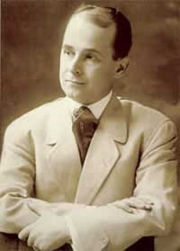

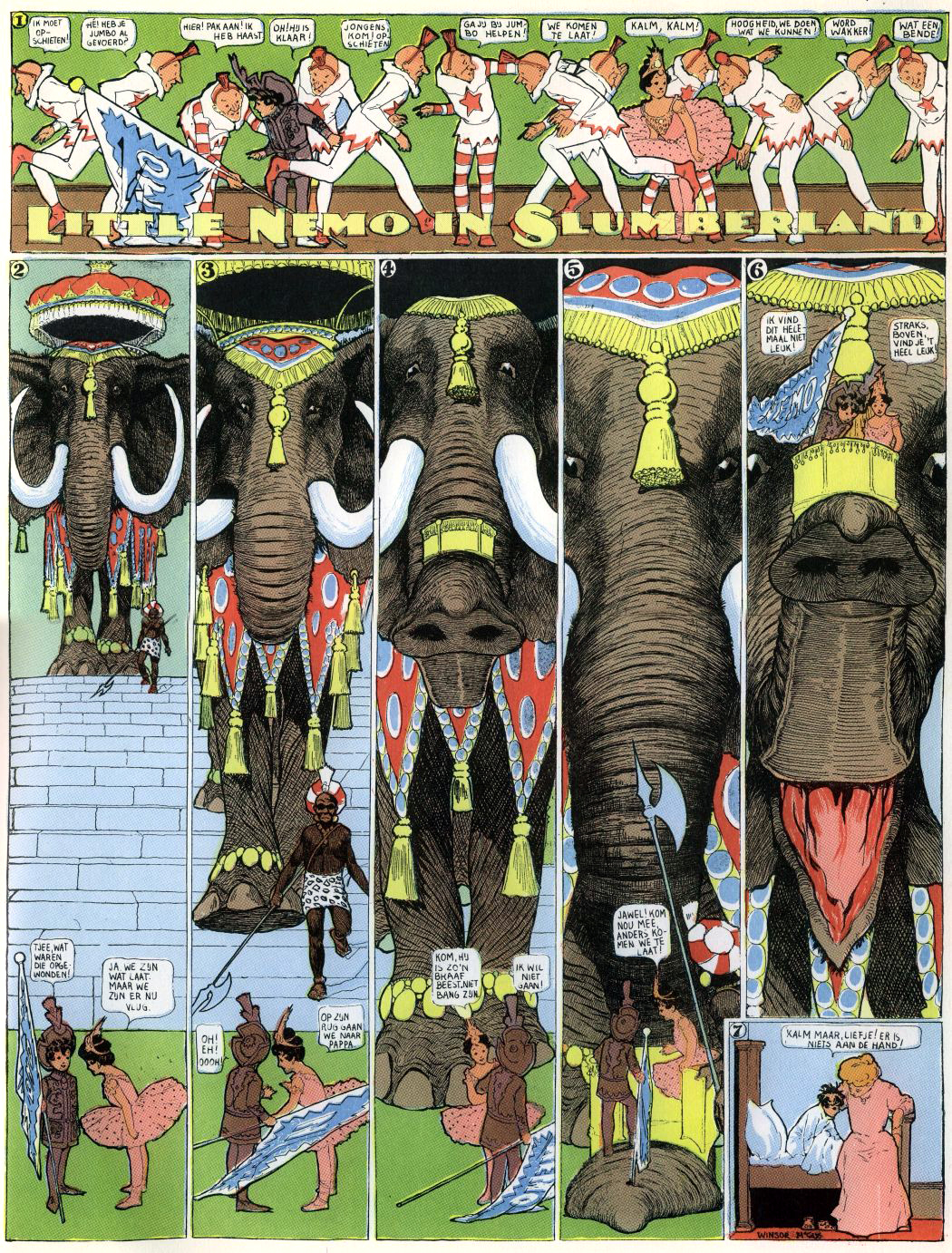

.jpg)

